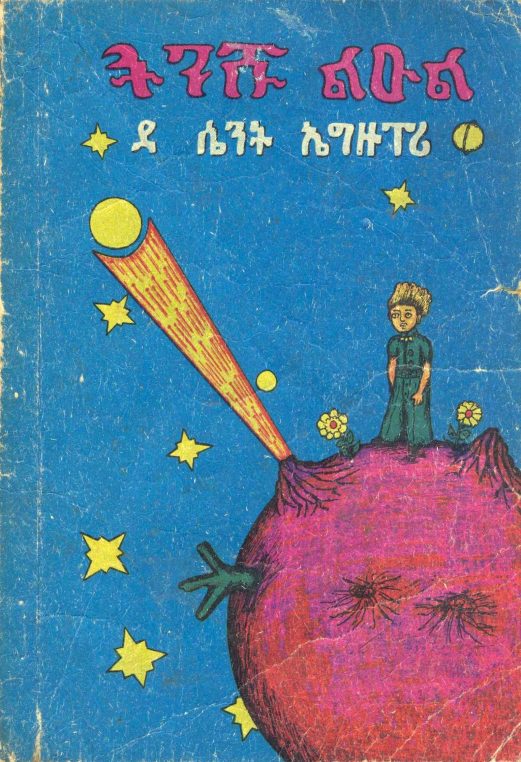
Edition of Le Petit Prince in Ahmaric Addis Abeba, translation Habte Maryam Markos, 1974, Fondation JMP for LPP
Le Petit Prince by Antoine de Saint Exupéry (1940-1944), is the book most translated in the world after the Bible. Over a 140 millon copies have been sold in 301 languages and dialects. An encounter with his young hero is organized at MAD, Musée des Arts Décoratifs, with over 600 books, photographs, drawings and letters featuring Saint Ex’ airplanes, books and films. The work was written in New York during WWII and its manuscript has travelled for the first time to Paris, from the Morgan Library (who acquired it in 1968 from his close friend Silvia Hamilton), on the occasion of this show. Drawings are hung at child’s level so that every admiror of the philosophical boy can see them, a great bonus at the time when school vacations are just starting.
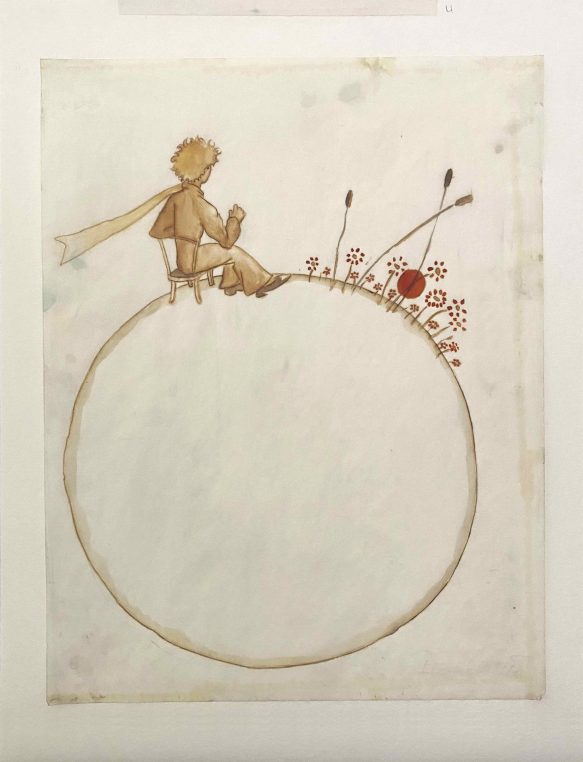
“One day I saw the sun set forty four times “, illustration for chapter VI, 1942 or 1943, Fondation Jean-Marc Probst pour le Petit Prince, collection Estate of Saint Exupéry-d’Agay, photo foundation JMP for LPP
An entire room is dedicated to the highlight of the exhibition, the original manuscript of “The Little Prince” kept in the Morgan library and Museum, in New York. Together with a number of unpublished original works from a private collection. There are many watercolor and ink drawings on onion skin paper like “Le chasseur de papillons” (the butterfly chaser), which were not used in the book. “The little Prince in all majesty”, with his subtle green coat which is hard to reproduce in print, is also unveiled for the first time in France. Handwritten pages from the book which Saint Ex gave to his friend Silvia Hamilton, are also available. All these elements and drawings help to rediscover the work. The show is curated by Anne Monier Vanryb from MAD and Alban Cerisier, Gallimard’s archivist and a historian of publishing. Olivier and Frédéric d’Agay, the grand nephews of the writer, who have been patiently collecting pieces over the last 70 years, were also present at the opening.
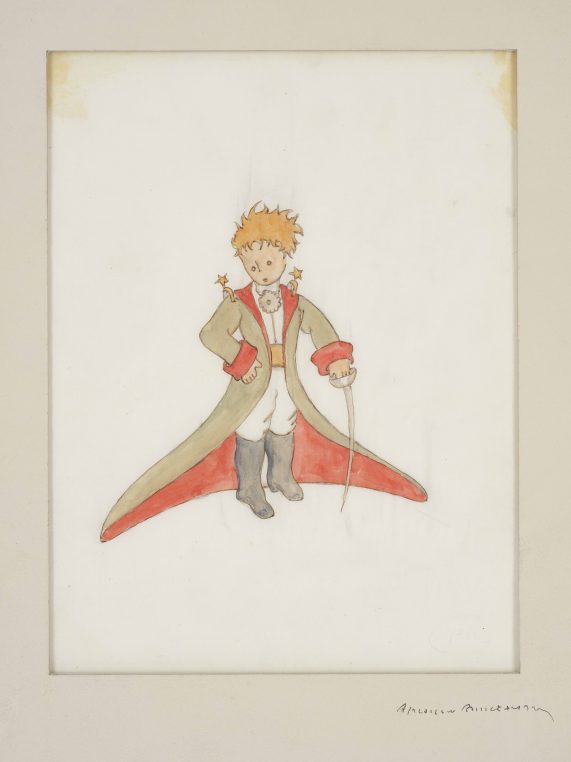
Le petit Prince en tenue d’apparat (in all his majesty), illustration for chapter II, 1942 or 1943, private collection
The book is usually considered as a deep reflection on serious things, things that are serious for the little prince, the pilot or for us… Is the tale addressed to children or to their parents? the force of the arguments and the beauty of the poetry are universal. One of the most charming drawing is of “the pilot asleep in the desert” 1942-1943, where he is seen completely helpless, with his knees crossed over one another. The dedication to his best friend Leon Werth comes as this:
To Leon Werth
I ask children to forgive me for dedicating this book to a grown-up. I have a serious excuse: this grown-up is the best friend I have in the world. I have another excuse: this grown-up can understand everything, even books for children. I have a third excuse: he lives in France where he is hungry and cold. He needs to be comforted. If all these excuses are not enough then I want to dedicate this book to the child whom this grown-up once was. All grown-ups were children first. (But few of them remember it.) So I correct my dedication:
To Leon Werth,
When he was a little boy
Saint Exupéry was always a hero, fighting in the Air Force in 1921, flying the Casablanca-Dakar route for the French Air courrier service and later flying in Argentina. He suffered a severe crash on the Paris-Saigon route in December 1935 and this led to a three day walk in the Lybian desert where he was rescued by Bedouins on January 1, 1936. This adventure will be told in “Terre des Hommes” (Grand Prix du roman de l’Académie française) translated as “Wind, Sand and Stars” in 1939. The presence of numerous photographs of colleagues and airplanes surviving the first disasters of aviation, attests to the courage he always showed. There are also film extracts from the 1930’s including “Courrier Sud” with Charles Vanel.
Saint Exupéry spent WWII in New York where he tried to convince the US to join the war and lived on Central Park South. He had been briefly engaged to Louise de Vilmorin at 23 and married Consuelo Suncin in 1931. He returned to Europe in 1944, in Sardinia, and disappeared on July 31 in his aircraft in the Mediterranean Sea. “Le Petit Prince” was published first in America in 1943, and posthumously in France in 1946.
Until June 26 at MAD, 107 rue de Rivoli.
Share this Post
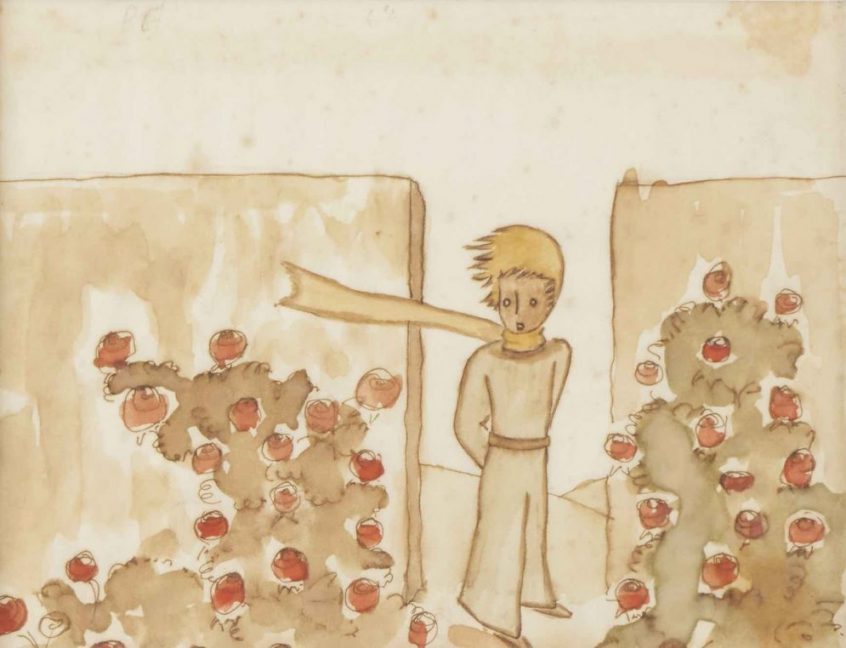
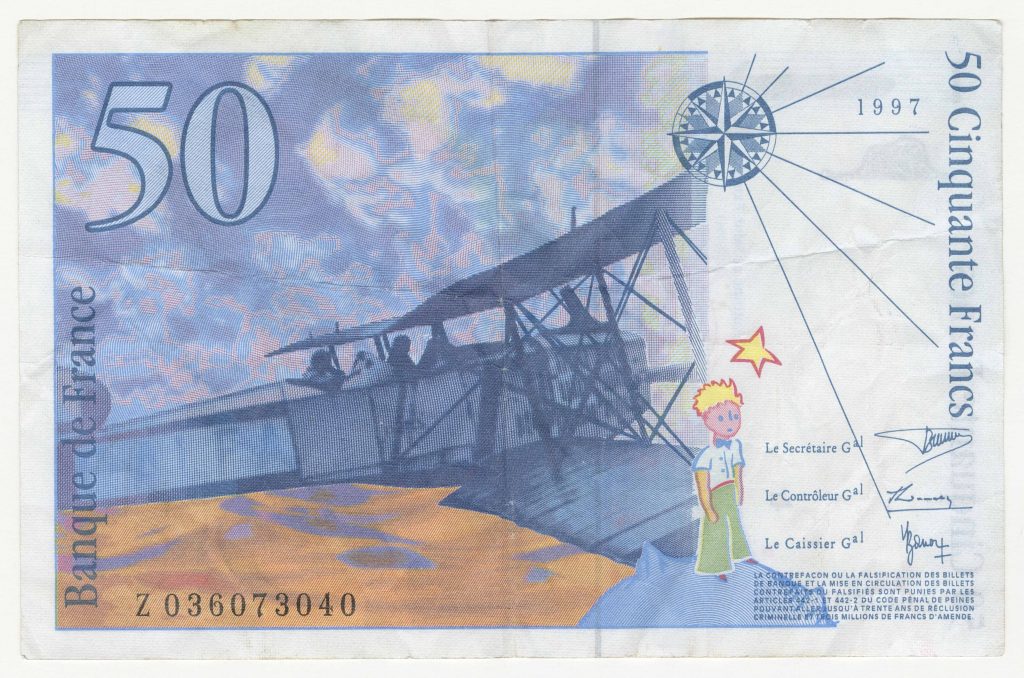

One Comment on “Saint Exupéry’s “Le Petit Prince”, lands at MAD at last”
My favorite book. Oh, how I would love to see this! Thank you for sharing a little bit of it.